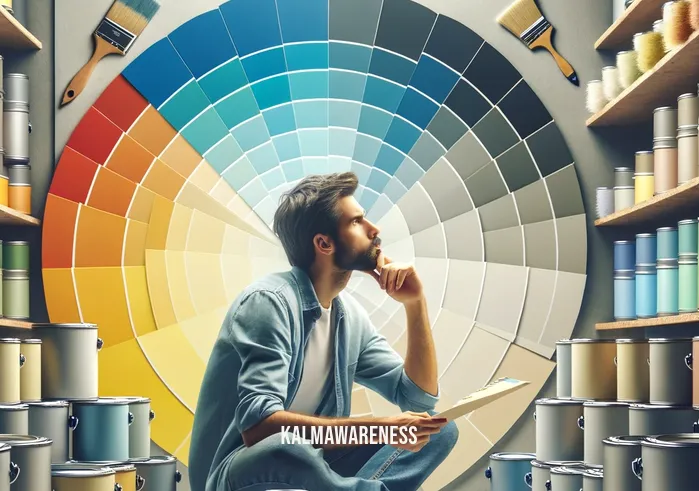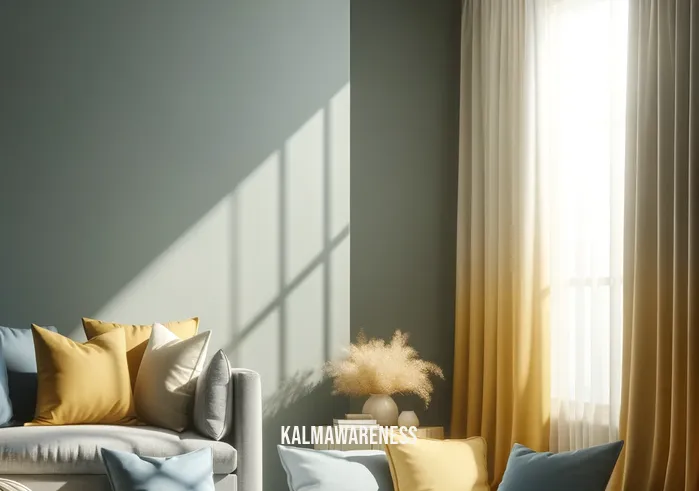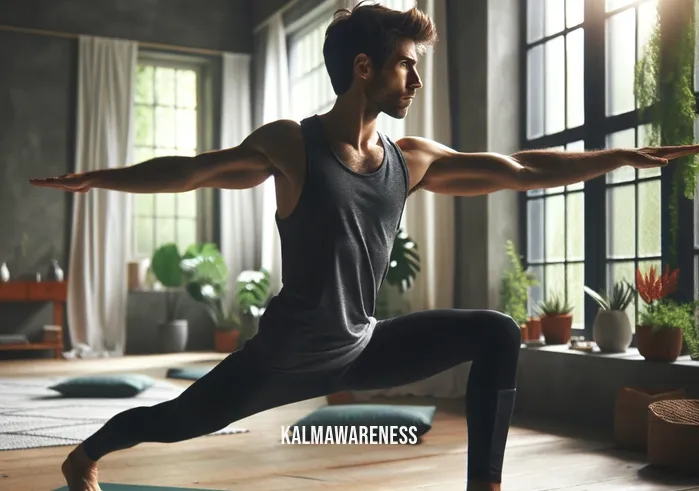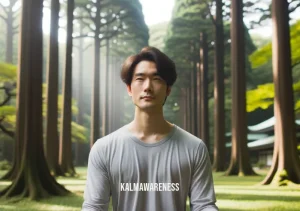Mindful Gray Complementary Colors: The Subtle Power in Design
In the expansive realm of interior design and home décor, colors play a pivotal role. Every hue, from the softest pastel to the most vibrant shade, communicates an emotion, sets a mood, and leaves an indelible impact on the viewer. Among these, the shade of “mindful gray” has increasingly caught the attention of designers and homeowners alike. While seemingly simple, the depth and versatility of mindful gray make it a favored choice for many. But what truly accentuates the beauty of this shade are its complementary colors. Understanding these colors and the interplay between them forms the cornerstone of using mindful gray effectively.
The Allure of Mindful Gray
Often found nestled between the spectrum of cool and warm tones, mindful gray has an adaptable character. This particular shade seems to change its undertone depending on the lighting and its surrounding hues. It’s this chameleon-like ability that has made it a darling of the interior design world. One might wonder, why has it garnered such popularity in recent times?
- Flexibility: The color provides a neutral backdrop, allowing for a plethora of accent colors to shine.
- Timelessness: Despite being contemporary, it has a timeless quality, ensuring that your interiors won’t feel dated in a few years.
- Soothing Nature: Owing to its muted nature, mindful gray is easy on the eyes and exudes a calming aura, making it perfect for spaces meant for relaxation.
The Science of Complementary Colors
In color theory, complementary colors are those placed opposite each other on the color wheel. When paired together, these colors intensify each other’s brilliance. For instance, red and green or blue and orange are complementary pairs. For a shade like mindful gray, understanding its complementary colors is crucial. It helps in amplifying the elegance of the color and ensures that the design remains cohesive.
It’s not just about aesthetics, though. Color psychology tells us that the combination of colors can influence one’s emotions and behaviors. The right pairing can evoke feelings of warmth, comfort, excitement, or serenity.
Pairing with Mindful Gray
The key to perfecting the use of mindful gray lies in understanding its undertones and coordinating colors. As you delve into its nuances, you’ll realize that not all shades of gray are created equal. The shade ‘mindful gray’ from Behr, for instance, may differ slightly from another brand. Thus, understanding the specific hue and its coordinating colors becomes essential.
Here are a few general guidelines:
- Warm Undertones: If your mindful gray has warm undertones, consider pairing it with earthy shades like terracotta or deep browns.
- Cool Undertones: For grays with cooler undertones, icy blues or cool purples can work wonders.
- Neutral Undertones: In such cases, the field is open! From soft pastels to bold colors, anything can be paired, though one might want to be careful with very vibrant shades.
Lastly, it’s essential to consider the trim. The best trim color for mindful gray can elevate your space and give it a polished look.
Conclusion and Looking Ahead
The power of mindful gray and its complementary colors lies in their synergy. When paired rightly, they create spaces that are balanced, aesthetically pleasing, and resonate with the intended emotion. As we venture further, the next chapter will delve deeper into specific combinations, case studies, and provide practical tips on using this versatile color in various spaces. Whether you’re a seasoned designer or a homeowner looking to redecorate, understanding the potential of mindful gray and its pairings can be a game-changer.
Stay with us, and continue reading to harness the full potential of this contemporary yet timeless shade.

Delving into the Nuances of Mindful Gray Complementary Colors
In our journey through the world of mindful gray, we’ve understood its allure and versatility. Yet, to truly harness its potential, a deeper exploration of its complementary colors is required. Complementary colors aren’t just about aesthetic appeal; they’re about creating harmony and balance. When paired meticulously with mindful gray, they amplify the ambiance and breathe life into spaces.
Why Mindful Gray Complementary Colors are Crucial
Harmony and Balance: Just as music needs varied notes to form a melody, design requires different shades to create a harmonious composition. Mindful gray, being neutral, provides the perfect canvas, and its complementary colors are the brushstrokes that complete the picture.
Enhanced Spatial Perception: The right complementary colors can make spaces look bigger or cozier, depending on the intent.
Emotional Impact: Colors have the power to evoke emotions. By understanding the perfect complements for mindful gray, designers can create spaces that resonate with desired emotions, from calmness to exhilaration.
Personalization: Given its neutral tone, mindful gray acts as a blank slate, allowing homeowners and designers to infuse their personality and style using complementary hues.
A Palette of Possibilities: Exploring Shades
Mindful gray’s versatility lies in its adaptability. Whether your home sports a contemporary look, a rustic charm, or a blend of styles, there’s a complementary color waiting to be discovered. Some popular shades that work wonders with mindful gray include soft lavender, deep teal, and warm terracotta.
The art, however, is in understanding the undertone of your chosen shade of mindful gray. As touched upon in the previous chapter, mindful gray’s undertones can swing between warm and cool, influencing the choice of complementary colors.
Complementary Colors At a Glance
| Mindful Gray Undertone | Recommended Complementary Color | Mood Elicited |
|---|---|---|
| Warm | Terracotta | Earthy & Calm |
| Warm | Golden Honey | Inviting & Warm |
| Cool | Soft Lavender | Soothing & Graceful |
| Cool | Icy Blue | Fresh & Serene |
| Neutral | Olive Green | Balanced & Natural |
Beyond Walls: Expanding the Horizon
The magic of mindful gray and its complements doesn’t just limit itself to walls. Think of upholstery, art pieces, rugs, and even lighting. A deep teal cushion on a mindful gray sofa, or a terracotta vase against a mindful gray backdrop, can be as captivating as painted walls.
Moreover, it’s essential to consider aspects beyond just color. Texture, patterns, and materials play a significant role. A velvet lavender cushion might feel different from a linen one, even if the color is the same. Every element, every nuance counts.
In Anticipation of the Journey Ahead
As we wrap up this chapter, our understanding of mindful gray and its complementary colors deepens. We’ve ventured beyond mere aesthetics, delving into the emotions and perceptions these colors can evoke. Yet, the expedition is far from over. In the next segment, we’ll explore real-world applications, delving into spaces transformed by the careful pairing of mindful gray and its complements. Whether you’re looking to redecorate a personal space or seeking inspiration for larger projects, the upcoming chapter promises insights and inspiration aplenty.
Stay tuned and continue reading as we embark on this colorful journey.

Drawing Inspiration from Mindful Gray Complementary Colors
Colors, in their subtle ways, often whisper stories of hope, comfort, and rejuvenation. As we delve deeper into the world of mindful gray and its vibrant complements, one can’t help but be inspired by the possibilities they present. The essence of these colors extends beyond just their visual appeal. They encapsulate emotions, encapsulate memories, and have the profound power to uplift and inspire.
Quotes to Illuminate the Path
“Color is the keyboard, the eyes are the harmonies, the soul is the piano with many strings.” – Wassily Kandinsky. This quote beautifully captures the essence of colors and how they resonate with our souls. Mindful gray, in this context, can be seen as a foundational key, setting the tone for other colors to play their melodies.
“In every color, there’s the light. In every stone sleeps a crystal.” – Manfred Kyber. Much like the hidden potential in every stone, the unassuming nature of mindful gray harbors a universe of complementary shades, each with its unique tale of hope.
“Mere color, unspoiled by meaning, and unallied with definite form, can speak to the soul in a thousand different ways.” – Oscar Wilde. It underscores the limitless potential of mindful gray and its complements, invoking varied emotions and interpretations.
Real-life Inspirations: A Canvas of Hope
The Coastal Retreat: A beach house in Malibu used mindful gray with cool undertones as the predominant shade. Complemented with soft lavender curtains and icy blue cushions, the space transformed into a serene sanctuary, echoing the tranquility of the ocean. The homeowner, an artist recovering from a personal setback, mentioned, “how the harmonious colors provided a calm and nurturing environment,” aiding her healing process.
The Urban Apartment: Situated in the heart of bustling New York City, an apartment’s living space adorned with mindful gray walls was brought to life with terracotta art pieces and olive green upholstery. The result? A haven of calm amidst urban chaos, exemplifying the power of mindful gray coordinating colors.
The Countryside B&B: A bed and breakfast in the English countryside used mindful gray with warm undertones for its guest rooms. Paired with golden honey bed linens and deep green plants, the rooms emanated warmth and coziness. One guest remarked that the colors “reminded her of the hope and rebirth” associated with springtime.
The Healing Power of Mindful Gray and its Allies
Every hue we’ve explored related to mindful gray not only adds visual delight but also caters to our emotional well-being. The calm of lavender, the freshness of icy blue, the warmth of terracotta – each shade carries its narrative of hope, making them more than just colors on a palette. They become tools of transformation, beacons of hope, and sources of daily inspiration.
There’s an undeniable magic in the meeting of mindful gray and its complementary shades. Together, they weave tales of dreams, aspirations, and the beauty of new beginnings. They remind us of the vast canvas of life, waiting to be painted with our stories, experiences, and emotions.
The Path Forward
The transformative power of mindful gray and its complements does not end here. As we transition to the next chapter, we will step into the realm of practical applications. From tips on choosing the right shade for specific spaces to understanding the influence of lighting, the upcoming segment offers a treasure trove of insights.
So, stay with us, and continue reading. Let’s unravel the mysteries and marvels of mindful gray complementary colors, further deepening our connection with the hues that color our world.
@
Dissecting the Charm of Mindful Gray Complementary Colors
The world of interior design has a unique language. Among its most eloquent speakers are colors, especially the subtle tones that come together to create harmonious living spaces. Mindful gray, with its undeniably sophisticated charm, plays a pivotal role in this conversation. However, to truly appreciate its versatility, we must delve deeper into its complementary colors and understand how they elevate the elegance of mindful gray.
The Characteristics of Mindful Gray
- Tone: Neutral with a hint of warmth, giving it versatility across various spaces.
- Mood Elicitation: It induces feelings of serenity, calmness, and elegance.
- Adaptability: High. It gracefully adjusts to both warm and cool complementary colors.
Top Complementary Colors for Mindful Gray and Their Influences
Deep Ocean Blue:
- Mood: Instills tranquility, echoing the depth and expansiveness of the ocean.
- Best used in: Bedrooms, study rooms, or any space needing a calming touch.
- Highlight: When paired with mindful gray, it produces a coastal ambiance. Explore more about this captivating duo here.
Warm Terracotta:
- Mood: Infuses warmth and earthiness, reminiscent of rustic Mediterranean aesthetics.
- Best used in: Living areas, patios, or dining spaces for an inviting atmosphere.
- Highlight: Terracotta, when juxtaposed with mindful gray, bridges the gap between modern minimalism and traditional charm. Learn how to make this blend work here.
Soft Lavender:
- Mood: Creates a gentle and romantic environment, perfect for contemplation.
- Best used in: Personal spaces, reading nooks, or even dressing rooms.
- Highlight: When soft lavender meets mindful gray, magic happens, providing spaces a dreamy allure. Unravel their synergy here.
Why Does This Matter?
While it’s tempting to view colors as mere decorative choices, their influence extends beyond the superficial. Here’s why mindful gray and its complementary shades matter:
- Emotional Resonance: The colors we surround ourselves with have a direct impact on our emotions. The right combinations can either uplift or soothe our spirits.
- Space Enhancement: Mindful gray’s adaptive nature, coupled with the right complementary colors, can make spaces appear larger, cozier, or even more luxurious.
- Aesthetic Pleasure: There’s undeniable joy in residing in or visiting a well-decorated space. Mindful gray and its complements undoubtedly elevate this experience.
Looking Ahead
We’ve journeyed through the tales of color, emotions, and spaces. As we prepare to wrap up our exploration in the concluding chapter, there are still layers to uncover. Get ready to dive into the practicalities of implementing these colors and the considerations to keep in mind. So, stay intrigued and continue reading, as the next chapter promises to wrap up our colorful narrative with clarity and actionable insights.
@
Reflections on Mindful Gray Complementary Colors
As we reach the conclusion of our enlightening journey through the realm of mindful gray complementary colors, it’s fitting to pause and reflect on the insights garnered. It’s been a tale of sophistication, versatility, and the undeniable magic colors weave into our lives. Through every chapter, we’ve unraveled the many layers of mindful gray, highlighting how its complementary hues play pivotal roles in elevating interior spaces and influencing our emotions.
The Majestic Play of Colors
From the tranquility of deep ocean blue to the earthiness of warm terracotta, mindful gray’s complements have taken us on a sensory voyage. It’s not just about aesthetics; it’s about how these colors resonate with our psyche, evoke emotions, and transform spaces. Remember how mindful gray’s accent colors amplify its charm? Or how the combination of lavender with our star shade conjures up a dreamy ambiance as detailed here? The lessons learned underscore the potency of thoughtful color selection.
Taking the Knowledge Forward
Equipped with the newfound knowledge of mindful gray and its myriad complements, you’re set to transform spaces—whether it’s your cozy bedroom, the vibrant living room, or a serene reading nook. But, more importantly, you’ve gained an understanding of the deep connections between colors, emotions, and spaces, empowering you to make informed design choices that resonate on an emotional level.
A Call to Further Exploration
While this chapter closes the book on our mindful gray narrative, the world of colors remains vast and uncharted. We invite you to delve deeper, explore other shades, their stories, and their impacts. Need a starting point? Why not revisit our in-depth analysis on mindful gray’s coordinating colors or discover the subtleties of mindful spaces? The knowledge is ripe for the taking.
Parting Words
To our cherished readers, thank you for embarking on this colorful journey with us. Your curiosity and keen interest have been the driving force behind our detailed exploration. We are committed to bringing you more insights, stories, and revelations from the expansive world of design, colors, and their profound impacts. Stay inspired, stay curious, and always remember—the world is but a canvas, and colors are its stories waiting to be told.
Here’s to many more enlightening journeys together. Until next time.




